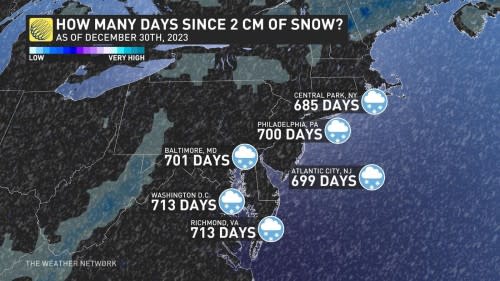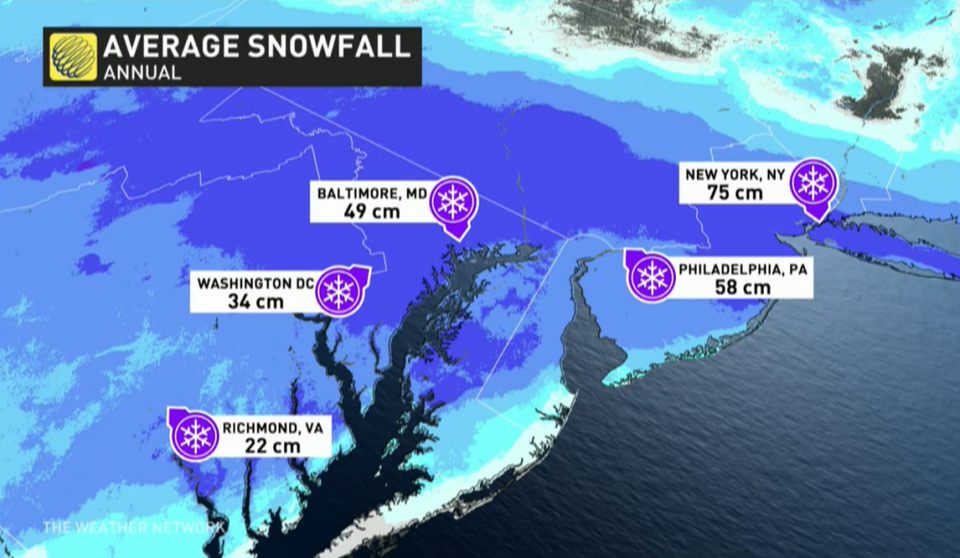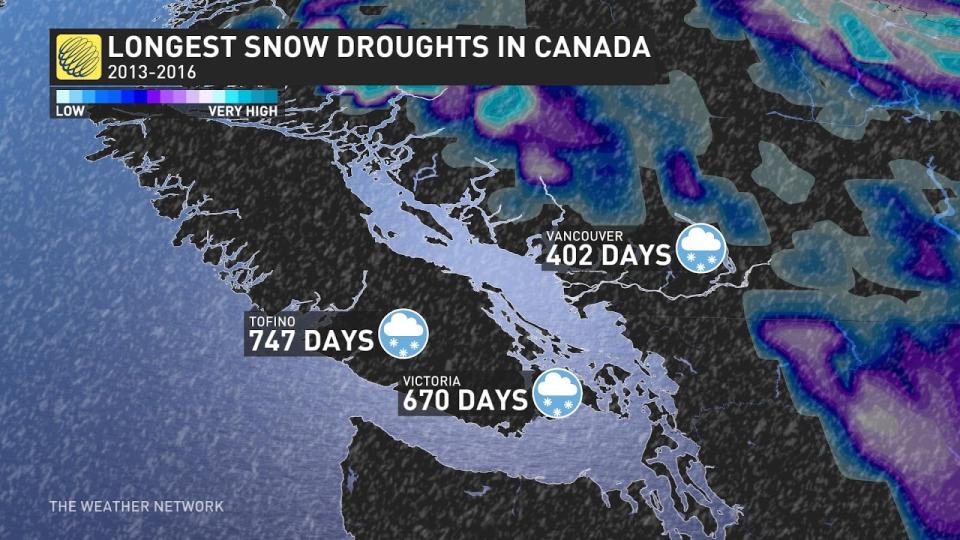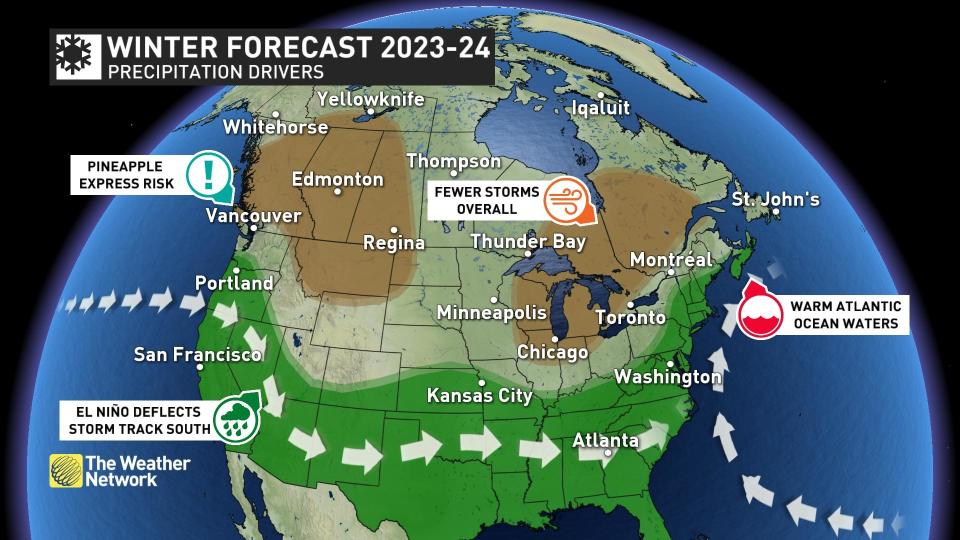Millions to begin 2024 amid a historic, years-long snow drought

Snow days are a thing of the past for an entire generation of kids as online learning replaces sledding and snowball fights during those stormy winter days.
But snow days typically require…well, snow, which also seems like a of the past for tens of millions of Americans enduring an unprecedented snow drought from Washington, D.C., to New York City.
Many cities are pushing 700 days since their last inch (2 cm) of measurable snowfall from a single storm, which is a tremendous streak that rivals the longest snow-free stretches ever recorded in Canada.
DON’T MISS: 2023 ending with mind-boggling warmth in Canada’s frigid Arctic
700+ days without enough snow to sweep
The epic snow drought along the densely populated Interstate 95 corridor from New York down through Virginia is truly impressive—and there’s no sign of snow any time soon.
New York City’s Times Square is the centre of the world for one glistening moment at the beginning of each year. But the only sparkle in the sky over the city that never sleeps this weekend is the light shining through thousands of crystal panels that adorn the ball that’ll drop to inaugurate 2024.

It’s been 685 days since New York City’s Central Park has seen at least 1 in (2 cm) of snow in a single day, which is nearly twice as long as the station’s previous snow-free record.
Any records in Central Park are exceptionally impressive given that the site has one of the deepest weather books in North America. Routine observations started there all the way back in 1869—just four years after the end of the U.S. Civil War, and two years after Canadian Confederation.
Similar historic snow droughts are ongoing down the coast in Philadelphia (700 days), Atlantic City (699 days), Baltimore (701 days), and in Washington and Richmond (713 days).

These cities typically see at least a few healthy snowfalls every season. New York City averages about 75 cm of snow every winter, while the milder Washington, D.C., picks up about 35 cm in a normal season.
Another nearby city that enjoys a wealth of weather data will also set its own grim snowfall record. Charlotte, N.C., logged its first completely snowless calendar year—without so much as a trace of snow reported—for the first time since records started there in 1878.
Few Canadian cities have gone so long without meaningful snow
It’s hard to fathom going such a long time without snow anywhere in Canada. The longest Toronto’s ever gone without at least 2 cm of snow was 323 days between February 2006 and January 2007.
Only folks along British Columbia’s mild coast have seen a similar streak of snow-free conditions, with their all-time records set during the warm period between 2013 and 2016.

Tofino didn’t report accumulating snowfall between December 6, 2013, and December 21, 2015, a streak that lasted a whopping 747 days to set the benchmark among major Canadian cities. Victoria endured a 670-day stretch without measurable snow, while Vancouver’s longest snow-free streak lasted 402 days.
Last year saw one of the region’s warmest-ever winters
The driving force behind the U.S. East Coast’s tremendous snow drought is the combination of very warm temperatures and an unfavourable storm track.
Despite the widespread cold snap that gripped much of North America last winter, the season still came in as the warmest ever recorded for much of the eastern half of the continent. Down in Washington, D.C., the season’s average temperature came in at about 6.6°C, more than 2.5°C above average for a typical winter.
New York City’s Central Park saw its second-warmest winter on record (again, that’s since 1869!), where the season’s average temperature of 5.0°C landed on par with the nation’s capital in terms of climbing above seasonal.
Even when cold air does manage to spill toward the East Coast, any storms rolling through the region take tracks unfavourable to snow.
Earlier this December, the same storm that brought historic rains to Quebec sent temperatures soaring as high as 17°C around New York City. Last year, many of the region’s storms missed west with snow in Ontario, or entirely missed to the east with a track toward Atlantic Canada.

MUST SEE: Snowbirds face a stormy winter as El Niño influences U.S. patterns
Even though these record streaks are safe through at least the first week of January, winter is far from over along the U.S. East Coast.
El Niño winters are infamous for major storms that tend to roll up the Atlantic seaboard. An active jet stream parked over the southern states frequently spins up low-pressure systems that can track up the coast.
If these moisture-laden storms coincide with a burst of cold air flooding down from Canada, they can generate memorable snows from the Carolinas straight up into Atlantic Canada.
Given the nature of nor’easters, those snow-starved cities along the Interstate 95 corridor are uniquely positioned to see some of the most intense snowstorms possible south of the border.
Header image courtesy of Unsplash.

